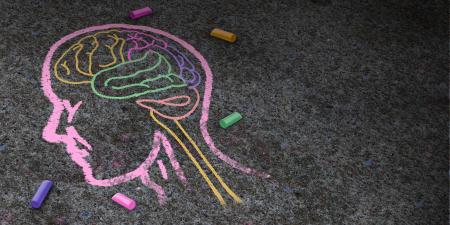Over the past 15 years I have worked as a board-certified behavior analyst with many talented people on the autism spectrum. Some have been excellent at memorizing patterns, such as license plate numbers; others have excelled at math from a very young age. Individuals on the spectrum have long been recognized to have the potential to be very talented, although these talents were often assumed to be restricted to math and science, with an emphasis on memorizing information. Drawing Autism [1], a collection of images and artwork by individuals on the ASD spectrum, illustrates that the potential for talent of people with ASD stretches far beyond math and memory. More than 40 international artists, all diagnosed with autism, are featured in Drawing Autism. The artwork demonstrates a staggering array of talent and style, as well as an insight into some of the characteristics of autism.
The impetus for Drawing Autism began with an artist I worked with at a residential facility in New York City. Glen, a young man with autism, loved to draw his favorite bands, as he knew them from seeing them on television shows. Not only did he enjoy drawing these figures (he would draw about 30 to 50 each week), but he had a great talent for making caricatures. His stick figures had an expressive, fun-loving nature.
Glen has difficulty interacting socially and communicating, especially when he is frustrated. Drawing is a great leisure activity for him. It is a hobby that he can enjoy each day after returning home from his daytime program. It gives him the freedom to create what he wants to create. His art also serves as a way for him to connect with the staff at his group home.
When I first met Glen he had recently moved out of his family home and was making the transition to a new, group-living situation. Asking questions about his artwork was a great way for the staff to get to know Glen and ultimately find out about his interests. It let me to get to know Glen, too, and helped guide some of his therapy: increasing leisure activities helped reduce problem behavior.
Getting to know Glen not only as an artist but also as a person sparked my interest in reading about and researching other artists with autism. I found some great artists but no cohesive collection of the amazing art created by people with ASD created. So Drawing Autism was born.
Drawing Autism has been a great journey. When the first edition was published, some of the artists were already successful in the art world, but many were just starting out, trying to build their careers, or had no aspiration to make art their career—it was just something they loved to do. In the years since the original edition was published, the artists have reported to me that they have had many opportunities. A few have been able to travel to museums and galleries that displayed their work, and others report that they have been successful selling their work, essentially launching careers as professional artists.
The paintings and drawings in Drawing Autism serve as a point of entry for understanding what it means to say that autism is a spectrum disorder. Some of the featured artists are higher-functioning, live independently, and have jobs and careers, and some are lower-functioning, nonverbal, in need of assistance with daily living skills, or unable to live on their own.
When I first started collecting submissions for the book, I began to recognize themes such as social isolation, repetitions and patterns, and an overwhelming interest in vehicles and history. I decided to group the artwork into chapters that represent commonalities within the artwork and among individuals with autism. What did not fit into a particular group was gathered in the chapter, “Art for Art’s Sake.”
Along with featuring their artwork, the contributors (or their parents or guardians) gave responses to the following set of questions: At what age did the act of creating art enter into your life? Why did you start creating art? What inspires/excites you about creating art? How do you choose your subjects? Why do you paint/draw what you do? Do you think your art helps others understand how you the view the world? The most revealing answers accompany the artwork, providing insight into the pieces as well as the artists and, ultimately, autism.
In my work with those who have autism and their families, I have seen how art can be a positive experience not only for the artist but also for his or her family, endowing them with an invaluable sense of pride and satisfaction. The greatest gratification I’ve had since the book was first published has been meeting contributors and seeing just how much it means to them to be featured in this book. Drawing Autism is not a clinical book, but it sheds a vibrant light on autism and lets readers know just how important art can be.
References
-
Mullin J. Drawing Autism. Brooklyn, NY: Akashic Books; 2014.



